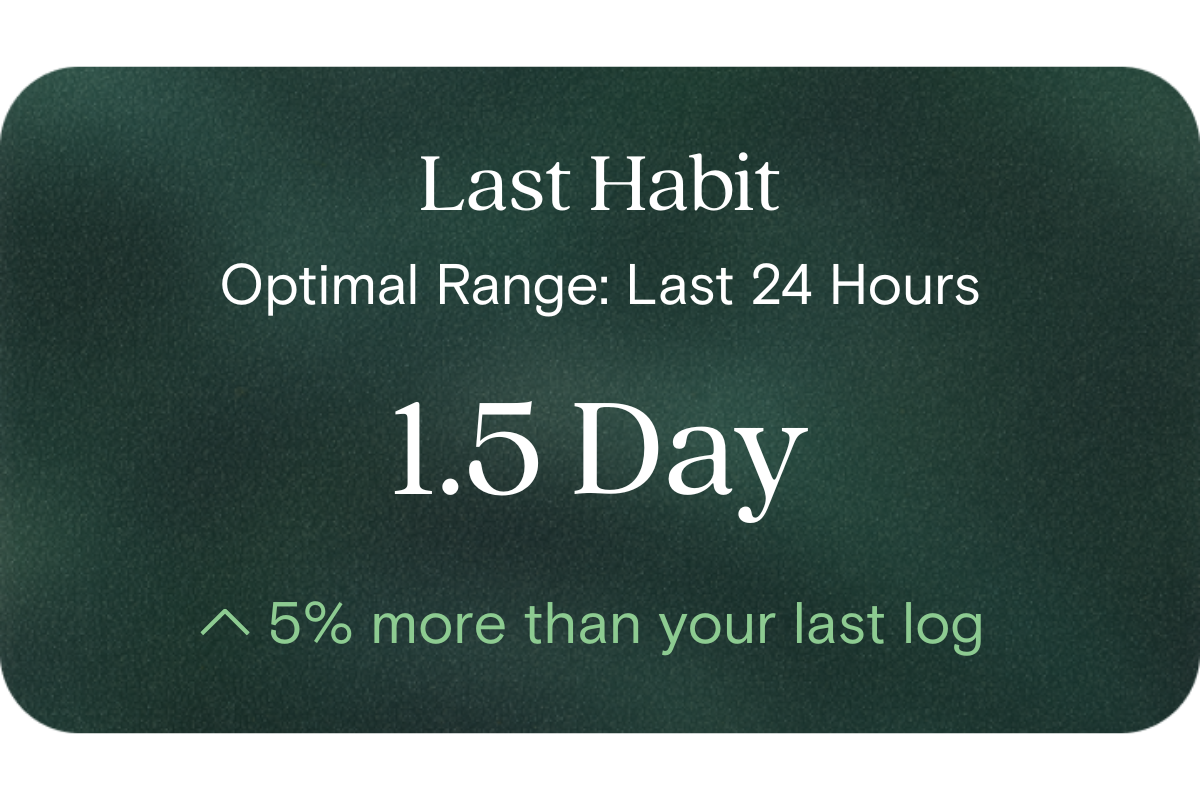What is Last Habit?
Last Habit measures how long it has been—expressed in hours or days—since you last completed a positive health-related activity, such as a workout, meditation, or meal planning session.
Why does it matter for long-term health and wellbeing?
Consistency in habits underpins sustainable wellbeing. Regular engagement in healthy actions helps maintain energy, improve recovery, and support stable daily rhythms that benefit both body and mind.
What’s an optimal level of Last Habit?
- Optimal (100%): within the last 24 hours
- Typical Australian reference range:
- 20% = 5+ days
- 40% = 3–5 days
- 60% = 2–3 days
- 80% = 1–2 days
- 100% = last 24 hours
What influences Last Habit levels?
Daily schedule, motivation, environment, energy levels, and access to supportive tools like habit trackers or reminders all play a role. Even short breaks in consistency can increase the time between habits.
What does it mean if Last Habit is outside the optimal range?
If several days have passed since a healthy habit, it may signal a break in consistency. This is an opportunity to reflect, reset your environment, and make small, achievable steps to reintroduce routine actions.
How can I support healthy Last Habit levels?
- Schedule habits into your calendar as non-negotiable appointments
- Set reminders or pair habits with existing routines (e.g., stretching after brushing your teeth)
- Track progress to stay accountable and celebrate consistency
This information is provided for general health and wellness purposes only and does not replace medical advice.
References
- Lally, P., van Jaarsveld, C. H. M., Potts, H. W. W., & Wardle, J. (2010). How are habits formed: Modelling habit formation in the real world. European Journal of Social Psychology, 40(6), 998–1009.
- Phillips, L. A., & Gardner, B. (2016). Habitual instigation (vs. execution) predicts exercise frequency. Health Psychology (advance online).
- Gardner, B., Phillips, L., & Judah, G. (2016). Habitual instigation and habitual execution: Definition, measurement, and effects on behaviour frequency.
- Webb, T. L., & Sheeran, P. (2006). Does habit weaken the intention–behaviour relationship? Psychology & Health.




















.png)
